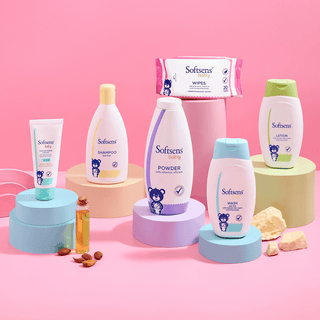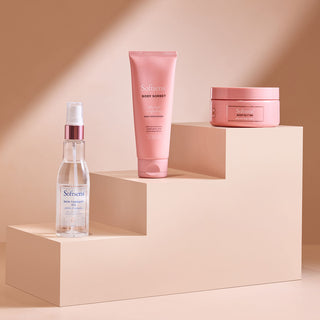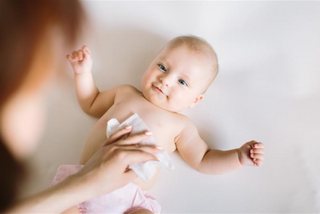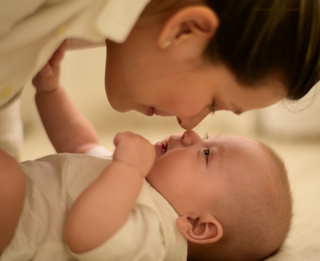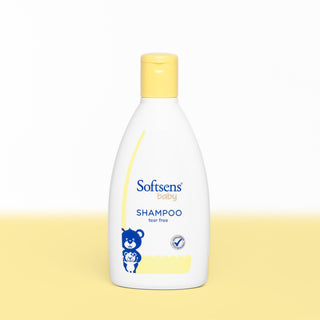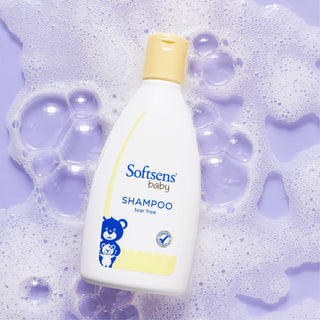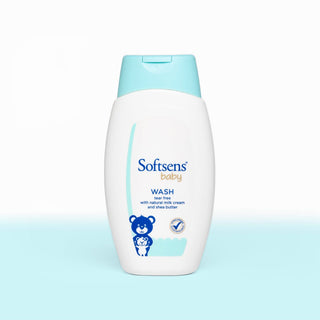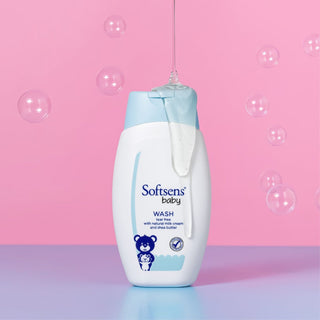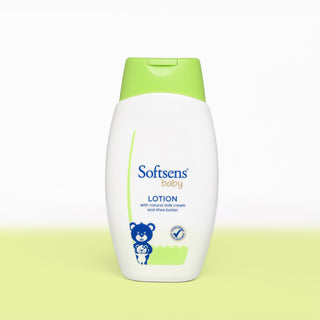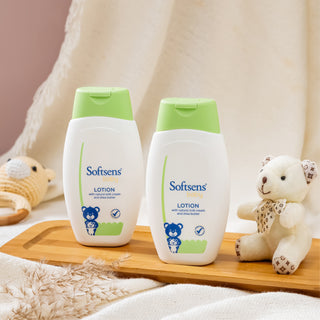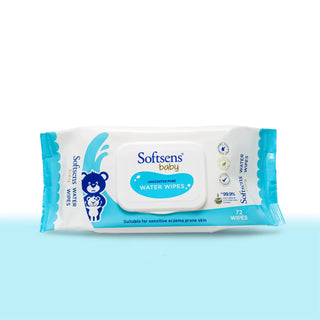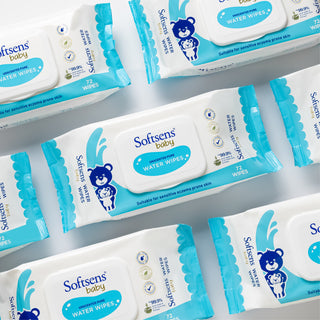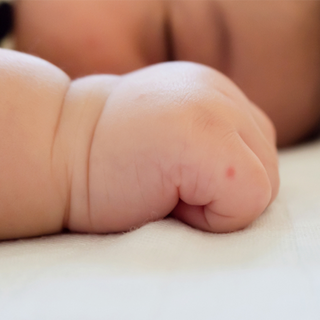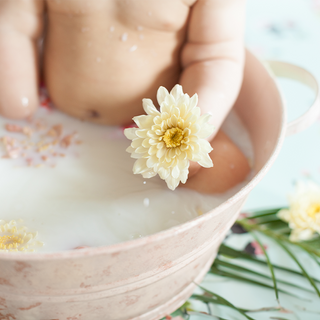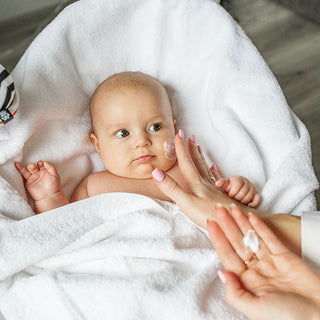
Congratulations on welcoming your precious newborn into the world! As you embark on this incredible journey of parenthood, one of your top priorities becomes caring for your little one's delicate skin. Unlike adult skin, a newborn's is thinner, more sensitive, and requires a gentle touch. This comprehensive A-Z guide provides you with the knowledge and confidence to nurture your baby's beautiful skin from head to toe, addressing common concerns and helping you establish a gentle skincare routine.
Understanding Newborn Skin
During pregnancy, your baby's skin undergoes a remarkable transformation, developing vital layers for protection and function. The outermost layer, the epidermis, provides a barrier against the outside world. Beneath lies the dermis, containing connective tissue, blood vessels, and nerves. However, a newborn's skin is thinner and more fragile compared to adults, making it more susceptible to dryness, irritation, and infection.
Here are some unique characteristics of newborn skin to keep in mind:
-
Thinness: Newborn baby's skin is extremely thin and delicate, easily absorbing substances and prone to irritation, thus requiring extra gentle care.
-
Vernix Caseosa: This white, waxy coating on your baby's skin at birth acts as a natural protector. Many parents delay baby's first bath to let it remain on the skin for longer.
-
Fragile Immune System: A newborn's developing immune system makes them more prone to skin conditions like eczema or diaper rash.
-
Rapid Cell Turnover: Newborns have a faster rate of skin cell regeneration, which can sometimes lead to temporary peeling. This is usually nothing to worry about.

Common Newborn Skin Conditions (A-Z Reference Guide)
Newborn skin has many different characteristics and can experience various changes, some of which may cause concern. Here's a breakdown of some common newborn skin conditions for easy reference (listed alphabetically):
Common Newborn Skin Conditions: A-Z Guide for New Parents
Newborns are prone to various skin conditions, some harmless and others requiring medical attention. This A-Z guide provides a comprehensive overview of common newborn skin concerns, helping you navigate this new territory with confidence.
Atopic Dermatitis (Eczema):
-
Appearance: Eczema presents as dry, itchy, red, and inflamed patches on the scalp, face, elbows, knees, and chest. It can flare up due to triggers like skin irritants, allergens, or dry weather.
-
Causes: The exact cause of eczema is unknown, but genetics and a malfunctioning skin barrier are believed to play a role.
-
Symptoms: Itchiness is the hallmark symptom. Other signs include redness, dryness, scaling, and tiny bumps.
-
Treatment: There's no cure for eczema, but management is key. Maintain a good skincare routine with gentle, fragrance-free products to keep skin hydrated. Identify and avoid triggers. Consult your pediatrician for stronger creams or medications if needed.
Birthmarks:
-
Appearance: Birthmarks are colored marks on the skin present at birth. Common types include salmon patches (pink patches on the neck, eyelids, or upper lip), Mongolian spots (blue-gray patches on the buttocks or lower back), and hemangiomas (raised red birthmarks).
-
Causes: The cause varies depending on the type of birthmark. Most are harmless.
-
Symptoms: Birthmarks on babies appear as colored patches, raised bumps, or vascular marks on the skin.
-
Treatment: Birthmarks do not require treatment. However, large, rapidly growing birthmarks or those that change colour or bleed warrant a pediatrician visit.
Cradle Cap (Seborrheic Dermatitis):
-
Appearance: Cradle cap appears as greasy, yellowish scales or crusts on the scalp, sometimes extending to the eyebrows, ears, and diaper area.
-
Causes: It's likely caused by an overproduction of oil from the baby's sebaceous glands.
-
Symptoms: Cradle cap is generally not uncomfortable for the baby. It doesn't cause itching or pain. However, it can be a bit unsightly for parents.
-
Treatment: Cradle cap is usually harmless and often clears up on its own. Soften crusty skin by massaging with a natural baby hair oil and gently cleanse with a mild tear-free baby shampoo. Brushing the scalp with a soft brush can help loosen the scales. Read our Complete Guide on How to Treat Cradle Cap in Babies here
Diaper Rash:
-
Appearance: Diaper rash appears as red, irritated, tender skin in the diaper area. In severe cases, there may be bumps or blisters.
-
Causes: Friction from diapers, exposure to urine and stool, and yeast infections can all contribute to diaper rash.
-
Symptoms: As the skin around the diaper area becomes red, tender & irritated, baby can be fussy and uncomfortable.
-
Treatment: Frequent diaper changes, using breathable diapers, and applying a barrier cream with zinc oxide at each change can prevent diaper rash from occurring. If your baby does have a diaper rash, continue frequent diaper changes, give baby diaper-free time to let their skin breathe and use a diaper rash cream . If the rash doesn't improve within a few days or seems severe, consult your pediatrician. Click here for our complete diaper rash guide.
Exfoliation (Peeling):
-
Appearance: Peeling skin in newborn babies appears as flaky patches that may shed from the face, arms, legs, or even the entire body.
-
Causes: This is due to the shedding of the vernix caseosa, a waxy coating on the baby's skin at birth.
-
Symptoms: Many newborns experience peeling skin, particularly on the hands and feet, within the first few days of life. It's a normal process as their skin adjusts to the outside world and generally not uncomfortable.
-
Treatment: No treatment is necessary. Avoid harsh rubbing and use gentle moisturizers like Softsens Natural Face & Body Lotion to keep the skin hydrated. If the peeling becomes excessive, red, or seems to be bothering your baby, it's best to consult your pediatrician to rule out any underlying conditions.

F-J
Folliculitis:
-
Appearance: Folliculitis in babies appears as tiny red bumps or white-headed pimples, often on the scalp (scalp folliculitis) or areas with hair, like cheeks and shoulders.
-
Causes: It's caused by bacteria entering hair follicles, leading to irritation and inflammation.
-
Symptoms: While not itchy like eczema, babies might fuss due to discomfort.
-
Treatment: Treatment involves gentle cleansing and possibly antibiotic creams prescribed by a pediatrician.
Guttate Psoriasis:
-
Appearance: Small, red, scaly patches on the skin. These patches are often seen on the torso, legs, and arms. Unlike eczema, guttate psoriasis doesn't usually affect the face or scalp in babies.
-
Causes: The exact cause of guttate psoriasis is unknown, but it's believed to be triggered by a recent bacterial or viral infection, such as a streptococcal infection. Genetics may also play a role.
-
Symptoms: Unlike eczema, guttate psoriasis in newborns isn't typically itchy. However, some babies might experience mild discomfort or irritation.
-
Treatment: Guttate psoriasis in newborns is usually mild and clears up on its own within a few weeks or months. However, it's important to consult a pediatrician if you notice any skin concerns on your newborn.
Heat Rash (Miliaria):
-
Appearance: Tiny, red bumps or clear blisters appear on a baby's skin, often on the face, neck, and areas where they sweat a lot.
-
Causes: Miliaria occurs when sweat gets trapped due to blocked sweat glands, often caused by overheating.
-
Symptoms: This heat rash may cause itchiness or a prickly sensation.
-
Treatment: It usually clears on its own with cooler temperatures and loose clothing. In some cases, a gentle calamine lotion or applying a cool compress can help soothe the discomfort.
Impetigo:
-
Appearance: This bacterial skin infection causes red, oozing sores, typically around the nose and mouth.
-
Causes: Impetigo in babies is caused by infection with staphylococcus aureus or streptococcus bacteria.
-
Symptoms: In addition to sores, there may be crusting, fever, and swollen lymph nodes.
-
Treatment: Consult your pediatrician for diagnosis and treatment. Antibiotics are typically prescribed to clear the infection.
Jaundice:
-
Appearance: Yellowing of the skin and whites of the eyes caused by a buildup of bilirubin, a waste product from red blood cell breakdown.
-
Causes: Mild jaundice is common in newborns and usually resolves on its own. However, it can also be a sign of underlying conditions.
-
Symptoms: While not typically uncomfortable, very high bilirubin levels (the cause of jaundice) can lead to sleepiness and feeding difficulties.
-
Treatment: Treatment focuses on lowering bilirubin levels through methods like phototherapy or, in severe cases, exchange transfusion. If your baby's jaundice appears severe, doesn't improve within a few days, or is accompanied by other symptoms like poor feeding or lethargy, consult your pediatrician immediately.
K-P
Lanugo:
-
Appearance: Fine hair covering a newborn's body, especially the shoulders and back.
-
Causes: Lanugo helps regulate body temperature and usually disappears within a few weeks.
-
Symptoms: It is a fine, downy hair that covers most of a newborn's body except for the palms, soles, and lips.
-
Treatment: It does not require any.
Milia:
-
Appearance: Tiny white bumps commonly found on the cheeks and nose.
-
Causes: These are harmless blocked oil glands and typically resolve on their own within a few months.
-
Symptoms: Milia appear as tiny white bumps or cysts on a newborn's face, often on the cheeks, nose, and chin, and don't cause any discomfort or itching.
-
Treatment: These harmless white cysts usually disappear on their own within weeks or months. Treatment isn't necessary, but avoid picking or squeezing them as it can cause scarring or infection.
Newborn Acne:
-
Appearance: Small red bumps, often appearing on the cheeks and forehead.
-
Causes: These are thought to be caused by maternal hormones still present in the baby's system.
-
Symptoms: These tiny red bumps or whiteheads on a baby's cheeks, nose, or chin are usually harmless and doesn't cause discomfort for the baby.
-
Treatment: Newborn acne is very common and usually clears up on its own within a few weeks. Avoid harsh scrubs or cleansers, and stick to a gentle skincare routine.
Oil Glands that are Underdeveloped (Dry Skin):
-
Appearance: Dry skin (caused by underdeveloped oil grands) appears as flakey, rough patches, particularly on the cheeks and legs.
-
Causes: Less developed oil glands and frequent bathing can contribute to dry skin in newborns.
-
Symptoms: Rough, flakey patches on baby's skin.
-
Treatment: Regularly moisturizing with a gentle, naturally-enriched lotion like Softsens Natural Face & Body Lotion, or Softsens Natural Face & Body Cream helps combat dryness and keeps your baby's skin soft and supple.
Pityriasis Alba:
-
Appearance: This is another common but harmless skin condition that appears as pale, dry, scaly patches, often on the cheeks and sometimes the arms or legs.
-
Causes: The exact cause is unknown, but it's not itchy or contagious and usually fades within weeks or months without treatment.
-
Symptoms: You might notice lighter patches on baby's cheeks, arms, or legs, often more noticeable after sun exposure.
-
Treatment: Pityriasis alba often clears up on its own. If needed, a gentle, hypoallergenic moisturizing cream or mild steroid cream prescribed by your doctor can help reduce dryness and discoloration.
Q-T
Quick Tips for Bath Time:
-
Temperature: Use lukewarm water to avoid stripping away natural oils.
-
Duration: Limit baths to a few times a week, and keep them short.
-
Gentle Cleansing: Use a gentle, tear-free cleanser like Softsens Baby Wash.
-
Pat Dry: Pat your baby dry gently with a soft towel. Avoid rubbing.

Rashes:
-
Many types of rashes can affect newborns, including diaper rash, heat rash, eczema, and cradle cap. If a rash persists, worsens, or seems concerning, consult your pediatrician for diagnosis and treatment.
Sunburn and its Prevention:
-
Appearance: Sunburn in babies appears as red, tender skin, often starting within a few hours of sun exposure and worsening over the next day. Blisters may develop in severe cases.
-
Causes: Sunburn is a painful reaction to excessive ultraviolet (UV) radiation from the sun. A baby's delicate skin is especially vulnerable to sunburn, and even short periods of exposure can cause damage. Even on cloudy days, a newborn's delicate skin can burn.
-
Symptoms: Sunburned babies show red, tender skin, fussiness, and possible sleep disruption or fever.
-
Treatment: First, protect your baby with sun-protective clothing, a wide-brimmed hat, and shade whenever possible. Use small amount of a gentle, baby-safe sunblock lotion like the Softsens SPF 30 Natural Sunblock Lotion. Soothe sunburn in babies with cool baths, gentle moisturizers, and loose clothing, seeking medical attention for fever or severe discomfort.
Trench Mouth (Angular Cheilitis):
-
Appearance: A red, cracked rash around the corners of the mouth.
-
Causes: This can be caused by yeast infection or excessive drooling.
-
Symptoms: In addition to the rash, there may be burning or soreness at the corners of the mouth.
-
Treatment: Gently clean the area and keep it dry. Consult your pediatrician for diagnosis and treatment recommendations, which may include antifungal medications if a yeast infection is present.
U-Z
Umbilical Cord Stump Infection
-
Appearance: Baby's belly button wound may look messy (redness, oozing) while healing - this is normal & painless. See a doctor if area gets red, tender, or baby has fever (omphalitis).
-
Causes: Improper umbilical cord care can lead to infection (omphalitis) causing redness, swelling, and even fever. In rare cases, it could cause delayed healing or bleeding from the stump.
-
Symptoms: Omphalitis, an umbilical cord infection, shows as redness, swelling, and pus around the navel, often accompanied by fever and fussiness in your baby.
-
Treatment: Keep the umbilical cord clean and dry until it falls off naturally, usually within 1-2 weeks. Fold the diaper front down to avoid irritating the stump. Avoid baths until the cord detaches.
Vernix Caseosa:
-
Appearance: Whitish, waxy coating on newborn skin that has antimicrobial properties and helps protect your baby's skin
-
Causes: Naturally produced by the baby during pregnancy.
-
Symptoms: None, it's a protective layer.
-
Treatment: No treatment needed, it rubs off naturally or during gentle cleaning.
Wrinkles:
-
Appearance: Newborn wrinkles are soft creases or folds on a baby's face, hands, and feet.
-
Causes: These wrinkles are due to a baby's thin layer of subcutaneous fat and puffy skin from fluids before birth.
-
Symptoms: Wrinkles are purely cosmetic and cause no discomfort.
-
Treatment: No treatment needed! They naturally plump up as your baby gains weight.
Xerosis (Extreme Dry Skin):
-
Appearance: Xerosis in babies appears as dry, flaky patches on their skin, often on cheeks, legs, and arms. It can sometimes be accompanied by slight redness or irritation.
-
Causes: Xerosis can be caused by various factors like eczema, atopic dermatitis, or environmental conditions.
-
Symptoms: Severe dryness causing itching, cracking, and scaling of the skin.
-
Treatment: Consult your pediatrician for a diagnosis and treatment plan, which may include prescription moisturizers or medications.
Yeast Infection (Thrush):
-
Appearance: Thrush shows as white or yellow patches, like cottage cheese, on a baby's tongue and inner cheeks, sometimes causing fussiness during feeding.
-
Causes: White, cottage cheese-like patches in your baby's mouth might be thrush, a fungal infection. Antibiotics, breastfeeding while mom has a yeast infection, or a weak immune system can cause it. Look for feeding problems, fussiness, or redness with the patches.
-
Symptoms: White patches on the tongue, inner cheeks, and possibly the diaper area. There may also be redness and discomfort
-
Treatment: Most cases are mild and treated with a doctor-prescribed antifungal medication. After each feeding, use a damp gauze pad to clean the mouth. Sterilize bottles and pacifiers to prevent re-infection. If breastfeeding, treat mom's yeast infection too. Call your doctor if thrush doesn't improve in a week, spreads, or your baby has a fever or is very fussy.
Caring for Your Newborn's Delicate Skin: A Simple Routine

Newborn skin is incredibly delicate and requires a gentle touch. Here's a basic skincare routine to keep your baby's skin healthy and comfortable:
Bathing:
-
Frequency: Unlike older babies, newborns don't need daily baths. Two or three baths a week are sufficient.
-
Gentle Cleansing: Use lukewarm water and a gentle cleanser like Softsens Tear-free Body Wash to cleanse sensitive areas like the face and diaper area. For babies with extra dry and sensitive skin, you can use a moisturizing cleanser like Softsens Baby Milk Bar Soap or Softsens Baby Nourishing Bar Soap.
-
Pat Drying: Avoid rubbing, which can irritate your baby's skin. Gently pat them dry with a soft towel.
-
Umbilical Cord Care: Until the cord falls off naturally (usually within 1-2 weeks), keep the area clean and dry. Avoid submerging your baby in water during baths.
Moisturizing:
Newborns have less developed oil glands, making their skin prone to dryness. A gentle, moisturizer like Softsens Natural Face & Body Lotion, or Softsens Natural Face & Body Cream helps lock in moisture and keep your baby's skin soft and supple. Apply moisturizer after bath time and whenever needed.
Diaper Changing:
-
Frequency: Frequent diaper changes are crucial to prevent diaper rash. Change your baby's diaper whenever it's soiled or wet.
-
Wiping Technique: Always wipe front to back to prevent the spread of bacteria. Use gentle baby wipes like our 99.9% pure water wipes or warm water with a soft washcloth. Pat dry the area thoroughly.
-
Barrier Creams: Apply a barrier cream like petroleum jelly or diaper rash cream with zinc oxide at each diaper change to protect your baby's skin from irritation caused by moisture.
Nail Care:
Newborn nails grow quickly and can be sharp, potentially scratching their delicate skin. Use soft baby nail clippers or a file to trim their nails gently.
Remember:
-
Always consult your pediatrician if you have any concerns about your baby's skin.
-
Less is often more when it comes to newborn skincare.
-
Keep your baby's hygiene routine gentle and prioritize their comfort.
By following these simple steps, you can establish a healthy skincare foundation for your newborn and keep their precious skin happy and healthy.
Beyond Baths: Essential Newborn Skincare Tips
Newborn skin is delicate and requires more than just bath time TLC. Here are some essential skincare tips to keep your little one comfortable and healthy:
-
Sun Protection:A baby's developing skin is highly sensitive to the sun. Avoid direct sunlight, especially during peak hours (10 am - 4 pm). Use stroller shades, wide-brimmed hats, and lightweight, protective clothing. When exposed to the sun, protect baby's skin by applying a light layer of gentle, baby-safe sunblock lotion like the Softsens SPF 30 Natural Sunblock Lotion.
-
Comfy Clothes: Dress your baby in soft, breathable fabrics like cotton. Avoid rough materials or tight-fitting clothing that can irritate their skin. Opt for loose-fitting garments that allow for air circulation and prevent overheating.
-
Gentle Laundry Care: Your baby's clothes come into direct contact with their skin, so choose fragrance-free and gentle detergents specifically formulated for babies. This helps minimize the risk of allergic reactions or skin irritation.
-
Temperature Control: Newborns have difficulty regulating their body temperature. Maintain a comfortable room temperature (around 20-22 deg C) to avoid overheating, a common trigger for diaper rash and prickly heat.
-
Know When to See a Doctor: While minor rashes are common, persistent rashes, fever, or worsening skin conditions warrant a doctor's visit. Early diagnosis and treatment can prevent complications.
By following these simple tips, you can create a gentle skin care routine that keeps your newborn's skin happy and healthy. Remember, when in doubt, always consult your pediatrician for personalized advice.
The Rewarding Journey of Newborn Skin Care
Understanding your newborn's delicate skin is key to keeping them comfortable and healthy. While you might encounter common conditions like diaper rash or eczema, rest assured, most are manageable with proper care. From gentle cleansing and moisturizing to sun protection and temperature control, a simple skincare routine goes a long way. Remember, you're not alone in this journey! Don't hesitate to consult your pediatrician for any concerns or questions - their expertise will help ensure your precious little one thrives with happy, healthy skin.



